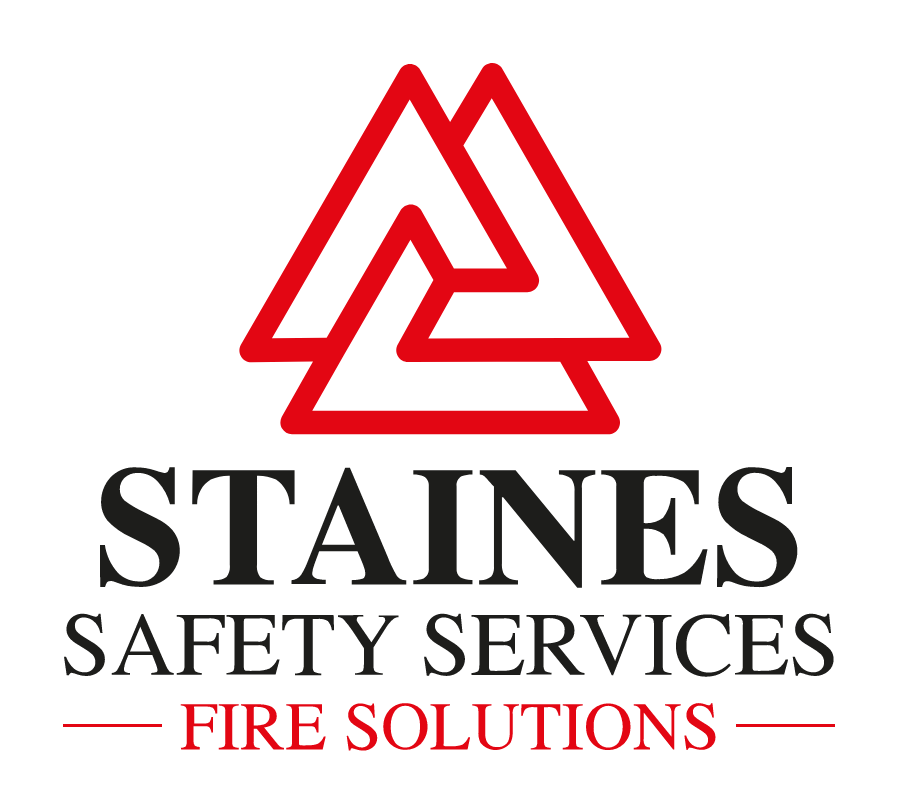
Fire safety isn’t something you can shove to the bottom of the to-do list. Whether you’re running a business, managing a property or even just curious about your own responsibilities, knowing exactly who is responsible for completing a fire risk assessment is essential. It’s not just red tape either—fire risk assessments save lives, protect property and keep you on the right side of the law.
But the answer to the question at the head of this article isn’t always as straightforward as you’d hope. Does responsibility lie with the landlord, the tenant or the employer? And where does the buck stop when it comes to hospitals and clinics?
Let’s break it down properly so there’s no confusion.
The Legal Background
In the UK, fire safety is governed mainly by the Regulatory Reform (Fire Safety) Order 2005. This law puts responsibility on the “responsible person”—a deliberately vague term that basically means whoever has control over the premises and the people inside it.
That person (or sometimes people, plural) has to:
- Carry out a fire risk assessment
- Keep it up to date
- Put in place fire safety measures
- Ensure employees or residents know what to do if there’s a fire
Sounds simple, but in practice, the “responsible person” changes depending on the situation.
Who is Responsible for Fire Risk Assessment – Landlord or Tenant?
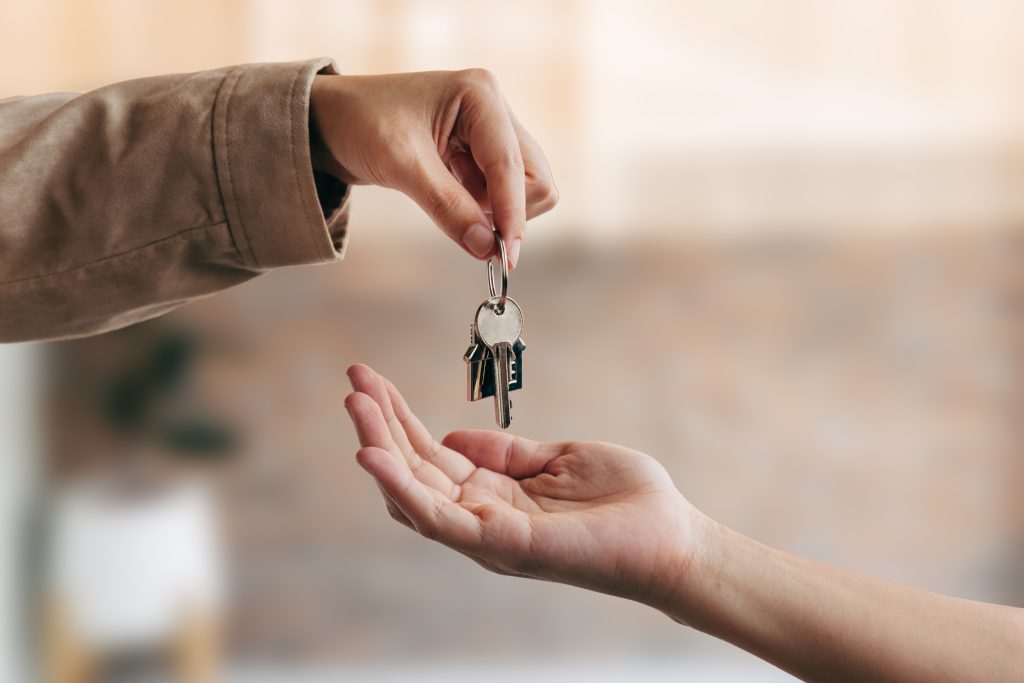
This is one of the most common questions. If you’re renting a property—whether it’s commercial or residential—does the fire safety burden sit with the landlord, or does the tenant have to deal with it?
The short answer: it depends on the lease agreement and the type of property.
Residential properties
- Landlord’s role: The landlord is usually responsible for the communal or shared areas of a building (like stairwells, hallways, and shared kitchens). They need to make sure these spaces are safe, alarms are in place, and escape routes are clear.
- Tenant’s role: Inside your own flat or rented home, you’re responsible for not doing anything daft that increases fire risk. For example, blocking fire exits with furniture or disabling smoke alarms.
So, in a block of flats, the landlord sorts out the big picture (communal alarms, fire doors, extinguishers in hallways), while you keep your individual living space safe (see graphic above).
Commercial properties
In offices, shops, and warehouses, it’s a bit trickier. The landlord might still cover shared spaces (corridors, lifts, communal toilets), but the tenant—the business owner—normally takes on responsibility for their actual unit or office space.
In other words, if you’re running a café in a rented building, you’re the one who has to complete a fire risk assessment for your café. The landlord just has to make sure you’ve got a safe building overall.
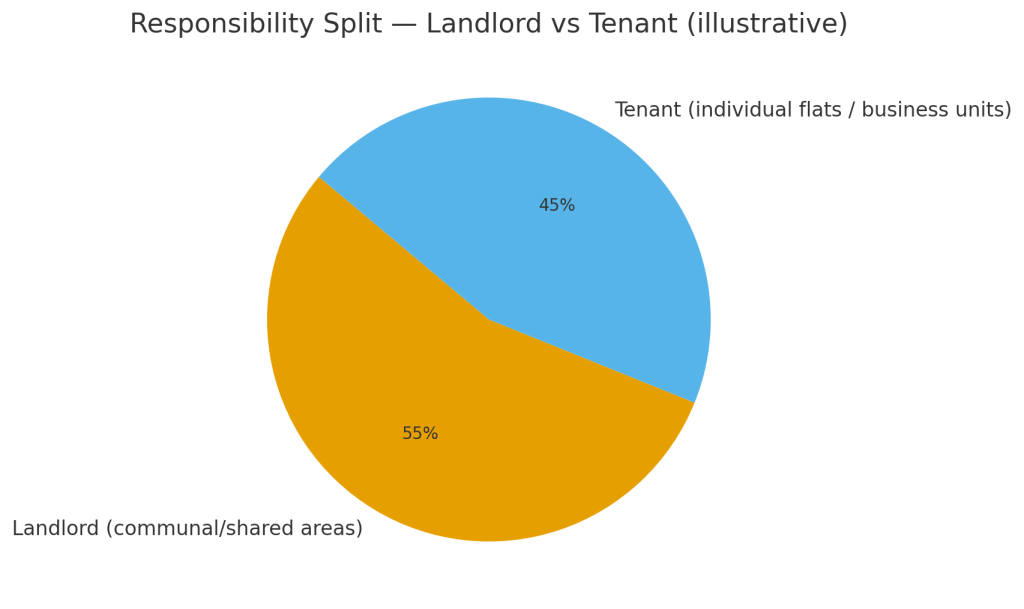
The golden rule
If you’re not sure, check your lease. It will usually spell out who does what. But one thing’s clear: you can’t just assume it’s someone else’s problem. If you’re running a business, you will almost always need to do your own fire risk assessment, even if the landlord has theirs.
Who is Responsible for Completing a Fire Risk Assessment NHS?

Now, let’s talk about the NHS. Hospitals, GP practices, clinics and care facilities are unique environments when it comes to fire safety. There are vulnerable people involved, complex buildings and equipment that can increase fire risk.
So, who takes charge?
The NHS Trust or Board running the facility is ultimately responsible. That means senior management (chief executives, estates and facilities directors) have the duty to ensure fire risk assessments are carried out across their sites.
But in practice, it gets delegated. Usually, there will be:
- Fire safety managers or officers – These are the people on the ground who conduct or oversee the fire risk assessments.
- Department heads and ward managers – They’re responsible for making sure day-to-day fire precautions are followed in their specific areas.
- Staff members – Every single staff member still has a duty to co-operate. For example, not blocking fire exits with equipment or reporting faulty alarms.
Because of the scale of NHS premises, the assessments are complex and have to be updated regularly. It’s not like assessing a small shop or office. Hospitals often have detailed fire strategies that go way beyond the basics, and inspections are carried out by fire safety professionals.
Why Fire Risk Assessments Matter
It’s tempting to see fire risk assessments as paperwork designed to keep bureaucrats happy. But they’re much more than that. A good assessment:
- Saves lives – Fires spread quickly, but simple measures like working alarms and clear exits make a huge difference.
- Protects property – Insurance claims get messy if you haven’t met your fire safety duties.
- Keeps you legal – Failing to carry out an assessment can result in fines or, in serious cases, prison sentences.
Enforcement officers from the Fire and Rescue Service do carry out checks. If they find you’ve ignored your responsibilities, they can issue enforcement or prohibition notices, and even shut your premises down.
Common Mistakes People Make
- Thinking the landlord handles everything – Not true for businesses.
- Letting the assessment gather dust – It needs regular review.
- Copying and pasting from a template – Every building is different. A one-size-fits-all approach won’t do.
- Not training staff – An assessment is pointless if people don’t know the fire procedure.
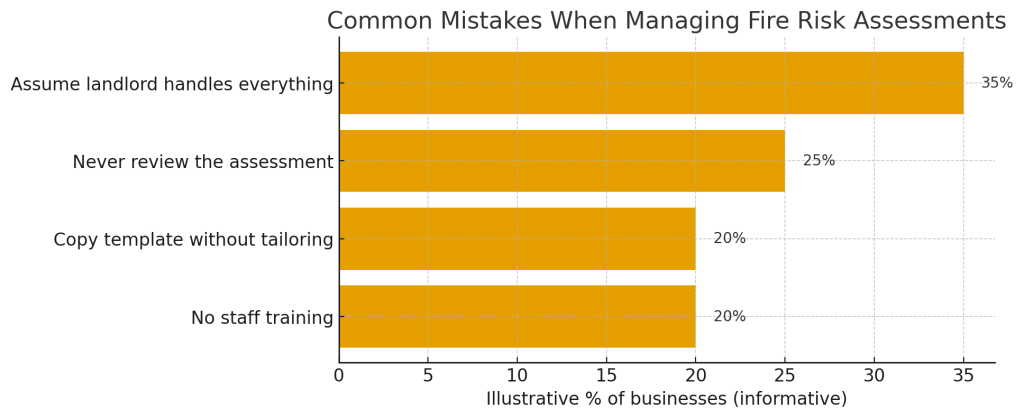
Why You Need a Professional

Although the law doesn’t say you must hire a consultant for a fire risk assessment (just a “competent person”), it always pays to get a professional in, even if your premises are small and seem to be low-risk (say, a small office with a few computers).
If you’re dealing with more complex buildings, with lots of staff or vulnerable people (like care homes and hospitals), a professional fire risk assessor is an absolute must. You don’t get a second chance when it comes to fire and a professional inspector will often spot things you can easily miss or deem unimportant.
If you’re unsure about your fire risk assessment responsibilities or you want a professional to carry out the assessment for you, give us a call today and we will guide you through the process.
Conclusion
So, who is responsible for completing a fire risk assessment?
- In residential rentals: the landlord for communal areas, tenants for their own flats.
- In commercial lets: landlords for shared spaces, tenants (businesses) for their own units.
- In the NHS: the Trust or Board at the top level, delegated down to fire safety officers and managers.
But, remember, fire risk assessments aren’t just about ticking a legal box. They’re about making sure people are safe, your property is protected and your organisation is doing the right thing.
You can find out more about our fire risk assessment services here or:
Fire Risk Assessment FAQS
Who is responsible for fire risk assessment – landlord or tenant?
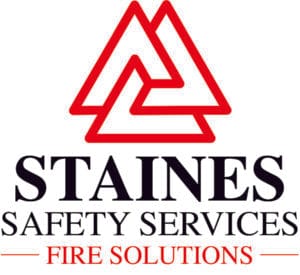 In residential buildings, landlords are responsible for communal areas like stairwells and hallways, while tenants are responsible for fire safety inside their flats. In commercial lets, landlords usually cover shared spaces, but tenants (businesses) must complete a fire risk assessment for their own units.
In residential buildings, landlords are responsible for communal areas like stairwells and hallways, while tenants are responsible for fire safety inside their flats. In commercial lets, landlords usually cover shared spaces, but tenants (businesses) must complete a fire risk assessment for their own units.
Who is responsible for completing a fire risk assessment in the NHS?
 The NHS Trust or Board running the facility is legally responsible, but the duty is delegated to fire safety managers, department heads, and staff. Hospitals and clinics require complex assessments that are reviewed regularly due to the vulnerability of patients and the size of the premises.
The NHS Trust or Board running the facility is legally responsible, but the duty is delegated to fire safety managers, department heads, and staff. Hospitals and clinics require complex assessments that are reviewed regularly due to the vulnerability of patients and the size of the premises.
What should a fire risk assessment template include?
 A typical fire risk assessment template covers identifying fire hazards, identifying people at risk, evaluating and reducing risks, recording findings with an action plan, and reviewing and updating regularly. Free templates are available from government websites, but they must be tailored to each building. See below for more details.
A typical fire risk assessment template covers identifying fire hazards, identifying people at risk, evaluating and reducing risks, recording findings with an action plan, and reviewing and updating regularly. Free templates are available from government websites, but they must be tailored to each building. See below for more details.
Fire Risk Assessment Template
If you’re wondering what a fire risk assessment actually looks like, you don’t need a fancy consultant right away. You can use a fire risk assessment template as a starting point.
Here’s a simple structure most templates follow:
- Identify fire hazards
- Sources of ignition (heaters, cooking equipment, electrical kit)
- Sources of fuel (paper, furniture, flammable liquids)
- Sources of oxygen (airflow, oxygen tanks in medical settings)
- Sources of ignition (heaters, cooking equipment, electrical kit)
- Identify people at risk
- Staff, visitors, residents, contractors
- People with reduced mobility, hearing or vision impairments
- Staff, visitors, residents, contractors
- Evaluate, remove, reduce risks
- Check escape routes are clear
- Ensure fire doors are in working order
- Fit smoke alarms, extinguishers, sprinklers if needed
- Check escape routes are clear
- Record findings and actions
- Write down the hazards
- Record what you’re doing to reduce risk
- Make a clear action plan
- Write down the hazards
- Review and update regularly
- At least once a year
- Whenever the building layout changes
- After a fire or near miss
- At least once a year
You can download free templates from government websites or local fire services. Just remember: filling in a form isn’t enough. You’ve got to follow through and actually make the changes.
